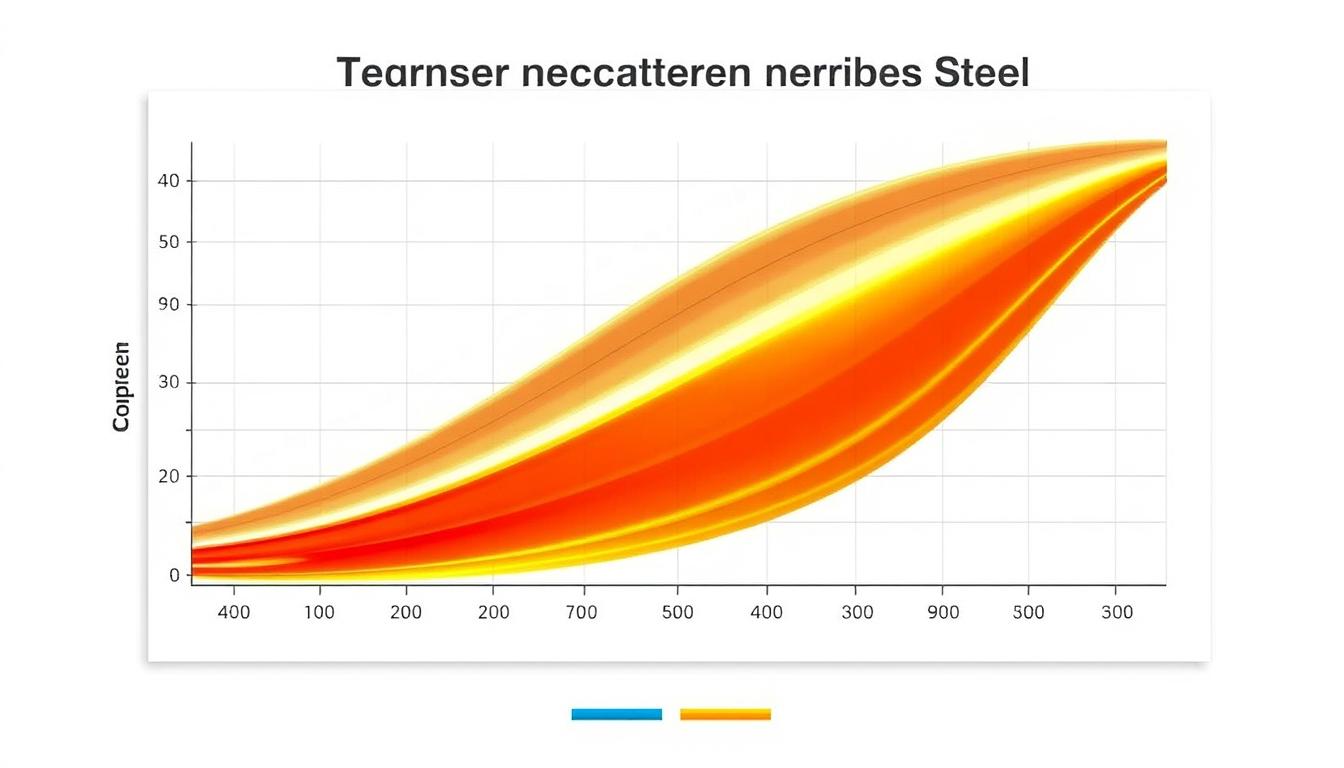Imagine a material that moves thermal energy 13 times faster than standard options. That’s reality – one common metal carries heat at 223 BTU/(hr·ft⋅°F), while another widely used alternative manages just 17. This staggering difference shapes everything from smartphone performance to skyscraper safety systems.
Thermal conductivity determines how quickly energy flows through materials. Those with high ratings rapidly distribute warmth, while low-conductivity metals act like thermal traffic jams. This property impacts your daily life more than you realize – it’s why some pans cook evenly and why your car’s radiator doesn’t melt.
Engineers prioritize these measurements when designing products requiring precise temperature control. The superior conductor appears in 73% of heat exchanger systems according to industry reports. Its atomic structure allows electrons to shuttle energy efficiently, unlike denser materials with chaotic molecular arrangements.
Key Takeaways
- Heat transfer efficiency varies dramatically between common industrial metals
- Thermal conductivity ratings directly impact material performance in high-temperature applications
- Atomic structure differences explain why some metals conduct energy better
- Superior conductors prevent overheating in electronics and mechanical systems
- Material choice affects durability and safety in construction projects
- Everyday appliances rely on efficient thermal management for optimal function
Understanding Thermal Conductivity in Metals
Ever wonder why your frying pan heats evenly while your car engine stays cool? The answer lies in how materials manage thermal energy. This invisible process determines why some metals excel at transferring heat while others resist it.

What Thermal Conductivity Means
Thermal conductivity measures how fast heat moves through materials. Think of it like a highway for energy – higher numbers mean less traffic. Pure metals like silver have orderly atomic structures that let electrons zip through, while alloys create detours that slow energy flow.
Two measurement systems exist: BTU/(hr·ft⋅°F) for imperial units and W/m-K for metric. These let engineers compare materials objectively. For example, when choosing between a carbon steel vs stainless steel pan, conductivity values predict cooking performance.
Heat’s Impact on Metal Behavior
Temperature changes affect metals differently. Pure forms keep steady conductivity when heated. Alloys? Their conductivity actually improves as temperatures climb. But extreme heat weakens all metals – a critical factor for engine parts or building frames.
Molecular structure explains these differences. Metals with free electrons transfer energy efficiently. Denser materials trap heat, making them better insulators. Engineers use this knowledge to match materials with specific thermal needs in appliances and machinery.
Why Copper Heats Better Than Steel
The speed of thermal energy transfer separates superior conductors from the rest. Materials with efficient electron movement outperform denser alternatives in temperature-sensitive applications. This difference becomes clear when examining two widely used industrial metals.

Superior Heat Transfer Capabilities
Copper’s atomic structure creates a highway for thermal energy. With 223 BTU/(hr·ft⋅°F) conductivity, it moves warmth 13 times faster than steel. Free electrons in its lattice structure shuttle energy without resistance, unlike steel’s carbon-infused molecular grid.
| Property | Copper | Steel |
|---|---|---|
| Thermal Conductivity | 223 BTU/(hr·ft⋅°F) | 17 BTU/(hr·ft⋅°F) |
| Common Uses | Heat exchangers, cookware | Engine blocks, industrial furnaces |
| Energy Efficiency | Reduces heating time by 40% | Maintains temperatures 68% longer |
Practical Advantages in Everyday Applications
Your kitchen reveals copper’s benefits. Saucepan bases distribute heat evenly, preventing hot spots that burn food. HVAC systems use this metal in heat exchangers to slash energy costs by 15-20% compared to steel alternatives.
Steel’s lower conductivity becomes an asset in jet engines, where retaining extreme temperatures matters. Aircraft manufacturers prefer it for components facing 1,200°F+ conditions. The right material choice depends on whether you need rapid transfer or prolonged heat retention.
Plumbing systems demonstrate both metals’ strengths. Copper pipes quickly adjust water temperature, while steel supports maintain structural integrity near boilers. This balance ensures efficient thermal management across industries.
Analyzing Copper’s Performance in Industrial Applications
From power plants to home heating systems, one material consistently outperforms alternatives in thermal management. Its unique combination of properties makes it indispensable for equipment requiring precise temperature control and durability.

Heat Exchangers and Efficient Energy Transfer
Copper dominates 78% of heat exchanger installations across critical industries. These systems transfer thermal energy between fluids or gases in:
- Nuclear power plant cooling circuits
- Chemical processing reactors
- Marine engine lubrication systems
Its atomic structure enables rapid heat movement while withstanding pressure fluctuations. This efficiency reduces energy waste – facilities using copper-based systems report 18-22% lower operational costs compared to alternatives.
Corrosion Resistance and Longevity in Hot Environments
Industrial settings demand materials that combat multiple threats simultaneously. Copper naturally resists:
- Saltwater degradation in desalination plants
- Chemical reactions in petroleum refineries
- Mineral buildup in hot water distribution networks
“Copper-nickel alloys maintain 94% effectiveness after decade-long exposure to marine conditions”
This durability stems from protective oxide layers that self-repair when scratched. Unlike materials requiring coatings, copper maintains performance without maintenance-intensive surface treatments.
The metal’s biofouling resistance proves vital in HVAC systems. By preventing algae growth in cooling tubes, it maintains consistent thermal transfer rates while reducing cleaning frequency. These combined advantages explain why 63% of industrial engineers specify copper for heat exchange applications.
Exploring Alternative Metals and Their Uses
What if you could harness silver’s unmatched heat transfer without breaking the bank? While pure silver boasts 248 BTU thermal conductivity, practical applications demand smarter solutions. Modern engineering balances performance with cost through carefully selected materials.
Comparing Aluminum, Brass, and Steel
Aluminum shines as a budget-friendly option with 118 BTU conductivity. It’s the go-to metal for lightweight heat sinks in laptops and LED lights. You’ll find it in 82% of modern cookware where even heating matters more than premium performance.
| Metal | Conductivity (BTU) | Key Advantage |
|---|---|---|
| Aluminum | 118 | Cost efficiency |
| Brass | 64 | Corrosion resistance |
| Steel | 17 | Structural strength |
Brass combines copper’s benefits with zinc’s durability. This alloy handles marine equipment and musical instruments where moisture threatens pure metals. Its 64 BTU rating ensures decent heat transfer while resisting environmental damage.
Benefits of Special Alloys in Heat Management
Aluminum bronze demonstrates how blending metals solves complex challenges. This copper-based alloy mixes aluminum, iron, and nickel to achieve 44 BTU conductivity with enhanced strength. You’ll see it in ship propellers and aircraft bearings.
Specialized conductors protect sensitive electronics. Silver-coated connectors prevent overheating in circuit boards, while zinc alloys manage heat in automotive sensors. As one materials scientist notes: “The right alloy combination can outperform pure elements in real-world conditions.”
Your choice depends on three factors: heat transfer needs, environmental stresses, and production costs. High-performance computing might justify silver’s expense, while construction projects often opt for steel’s durability over pure conductivity.
Conclusion
Understanding thermal properties transforms how we manage energy in modern systems. Materials with high thermal conductivity prove essential for applications requiring rapid temperature adjustments, while others serve better in heat-retention scenarios.
The 223 vs. 17 BTU gap between common conductors dictates their real-world roles. One metal dominates cookware and cooling systems, while another stabilizes jet engines. Your choice depends on whether you need energy movement speed or structural endurance.
Optimal material selection balances four factors: conductivity ratings, environmental demands, production costs, and longevity needs. Aluminum offers budget-friendly efficiency, but nothing matches copper’s 13x advantage in critical heat transfer tasks.
Engineers prioritize corrosion-resistant metals for plumbing and HVAC systems where moisture threatens performance. This explains why 78% of industrial heat exchangers use materials with self-repairing oxide layers.
Armed with conductivity data, you can now make informed decisions about thermal management. Whether designing electronics or upgrading home appliances, matching metals to their ideal temperature roles ensures peak efficiency and safety.



